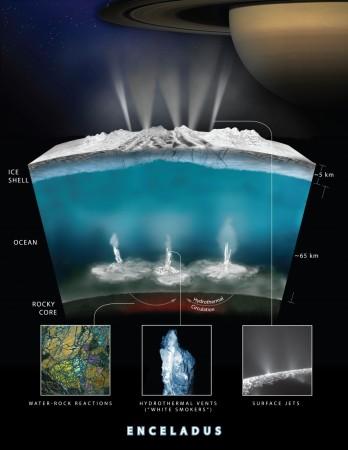
NASA will be exploring the ocean worlds of Jupiter and Saturn's moons Europa and Enceladus using the infrared capabilities of its James Webb Space Telescope.
ALSO READ: NASA takes steps to save human civilisation from Yellowstone Supervolcano: 7 things to know
Geronimo Villanueva, a planetary scientist at NASA's Goddard Space Flight Centre in Greenbelt, Maryland, is the lead scientist on the Webb telescope's observation of Europa and Enceladus.
Villanueva's team is part of a larger effort to study our solar system with the telescope, spearheaded by astronomer Heidi Hammel, the executive vice-president of the Association of Universities for Research in Astronomy (AURA).
ALSO READ: UFO spotted zipping by the US Capitol building on TV during a LIVE Fox News report! [VIDEO]
Here are 7 things to know:
1. The new findings will add more details to data previously collected by the Galileo and Cassini orbiters of the space agency. The new data collected by the powerful James Webb Space Telescope can also help guide future missions to the icy moons.
2. The NASA astronomers are basically interested in the plumes that breach the surface of these two moons, which comprise of water vapour and simple organic chemicals.
3. The main aim of this analysis is to discover the presence of life on Jupiter's moon Europa and Saturn's moon Enceladus. The telescope's near-infrared camera or NIRCam will be used by the team of astronomers to capture high-resolution images of Europa to analyse its surface and detect hot surface regions which point towards the presence of plume activity and active geologic processes.
4. The composition of the plume can be analysed spectroscopically if it is present close to the near-infrared spectograph, or NIRSpec, and mid-infrared instrument, or MIRI.

"Are they made of water ice? Is hot water vapour being released? What is the temperature of the active regions and the emitted water?" Villanueva asked. "Webb telescope's measurements will allow us to address these questions with unprecedented accuracy and precision."
5. NASA had previously accumulated details about these Cassini-Huygens and Galileo missions as well as its Hubble Space Telescope, it led to the revelation that large subsurface oceans took place because of geologic processes.
"We chose these two moons because of their potential to exhibit chemical signatures of astrobiological interest," astronomer Hammel was quoted as saying in a NASA statement.
6. Saturn's moon Enceladus is almost 10 times smaller than Saturn's moon Jupiter, which will make it difficult to capture high-resolution images of Enceladus' surface. However, it will still be possible to determine the molecular composition of the plumes of the moon and also determine its surface features.
7. The plans to use NIRSpec to detect organic signatures like methane, methanol and ethane in plumes of these two moons if the missions take place at the right time.
WATCH VIDEO:

















